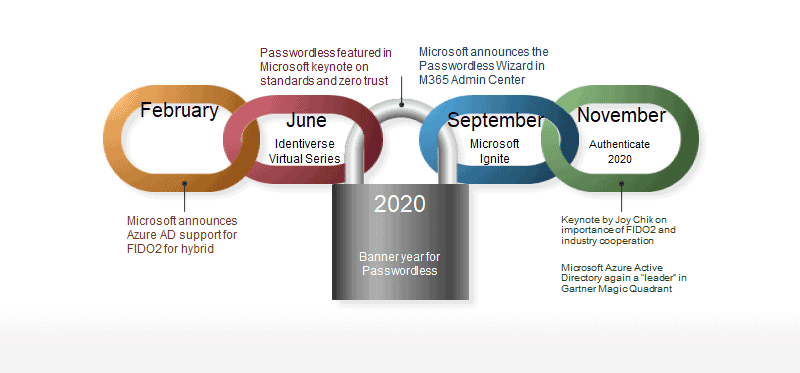Microsoft has long opposed traditional passwords as insecure. The company has invested in various solutions over the past few years, such as Windows Hello, Microsoft Authenticator, FIDO2 security keys, and palm vein authentication.
The company has now spoken about its progress on the path to completely eliminating traditional passwords, saying it plans to make them a thing of the past for all of its customers in 2021.
Microsoft noted that nearly 80% of all cyberattacks target passwords, and every 250 corporate accounts are hacked every month. However, the company is making efforts to migrate to password-free solutions.
In November 2019 at Microsoft Ignite, we shared that more than 100 million people were already using Microsoft’s passwordless sign-in each month. In May of 2020, just in time for World Password Day, that number had already grown to more than 150 million people, and the use of biometrics to access work accounts is now almost double what it was then. We’re set to make passwordless access a reality for all our customers in 2021.

Throughout 2020, Microsoft participated in various conferences to share its vision for a password-free future and the Zero Trust architecture. Microsoft has previewed Azure Active Directory support for FIDO2 security keys in hybrid environments; as well as a new password-less wizard through the Microsoft 365 admin center. The company has also partnered with several security partners from the Microsoft Intelligent Security Association (MISA) to develop password-less solutions.
2021 will be the year that Microsoft plans to make passwords obsolete for all of its customers. The company stressed that giving up the password would make life on the Internet much easier.
Windows 10X is ready for low-cost computers
According to some recent reports, Microsoft has finalized Windows 10X; which is a completely new version of Windows 10 for installation in low-cost laptops; competitors of mobile computers running Chrome OS. Microsoft has completed internal work on Windows 10X Build 202XX; and is ready to release it in Release to Manufacturers (RTM).
Recall that initially Windows 10X was coming out with a dual-screen Surface Neo; but later the strategy was adjusted, and in the current version it is intended for ordinary laptops with a number of limitations (remember that we are talking about budget models with small amounts of memory).

Despite the fact that Windows 10X is already ready, laptops running it will only appear on sale in the spring. Tentatively, in April. Microsoft is not going to distribute Windows 10X as a free downloadable firmware; so ordinary users will not be able to install it on their PCs just like that; at least until the system image transferred from the system partition of one of the laptops with this OS appears.
Windows 10X is a lightweight version of Windows 10 with unified drivers, no initial support for Win32 apps, and a simplified Start menu (no tiles). Another innovation in the Windows 10X interface is the rounded corners of the windows. If in Windows 10X this innovation has already been in place; then in regular Windows 10 it, apparently, will appear only in about a year.





